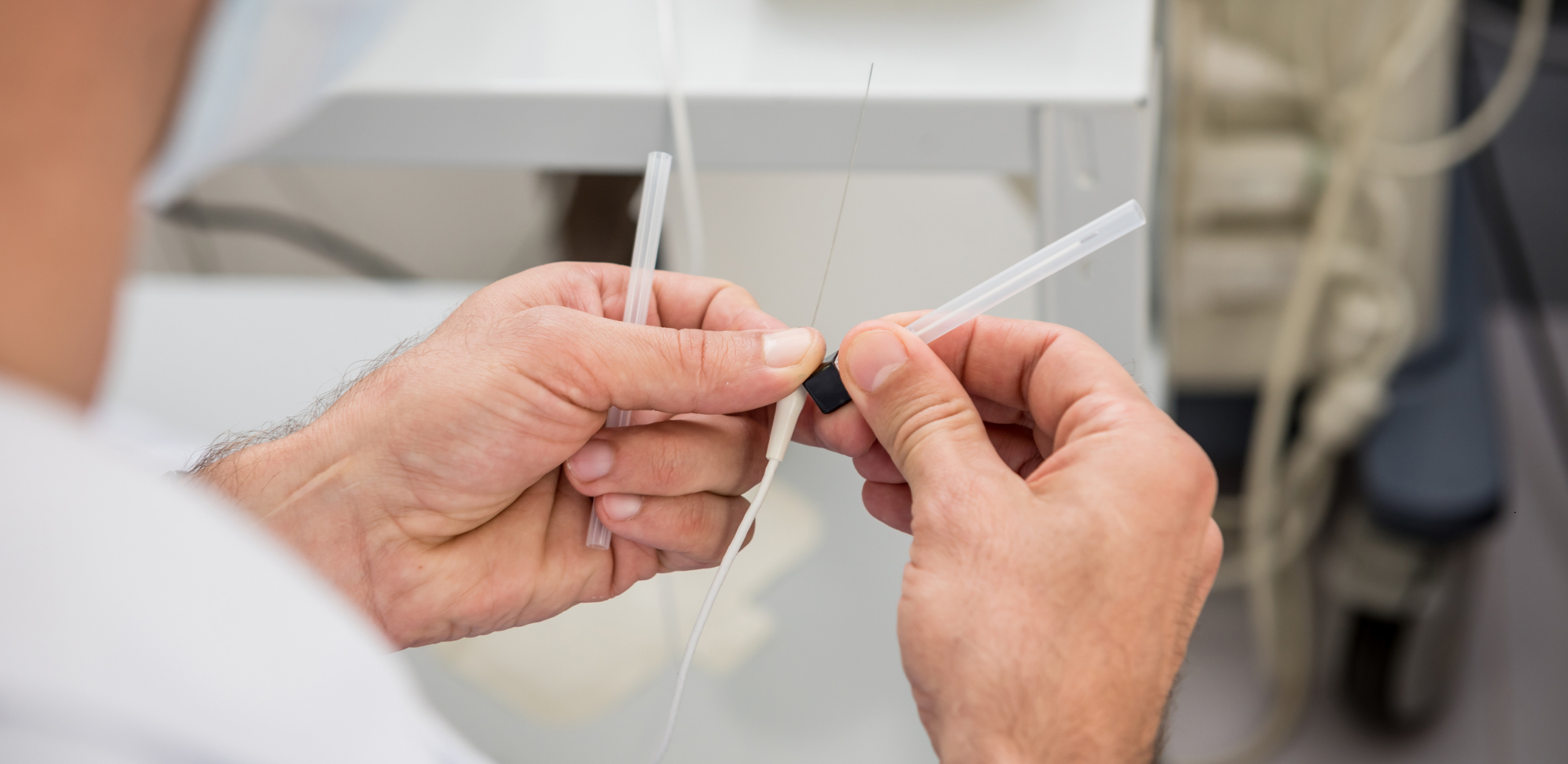- TAVI
- Tri-Klip
- Complex Coronary Interventions
- CTO Treatment (Chronic Total Occlusion)
- Balon Mitral Valvuloplasti
- Pulmonary Balloon Valvuloplasty
- Septal Ablation
- ASD (Atrial Septal Defect)
- Coronary Arteriovenous Fistula Closure
- Paravalvular Leak Closure
- Ablation Methods for Tachycardias
- Supraventricular Tachycardias
- Atrial Fibrillation
- Epikardial Ablation
- Stereotactic Radiosurgery
- Lead Extraction
- Device Implantations
- Pacemaker / ICD
- CRT / CRT-D Implantation
- Wireless Pacemakers
- Renal Denervation
- Non-Surgical Treatment of Aortic Aneurysms and Ballooning
- Cardioneural Modulation

Septal Ablation in Hypertrophic Cardiomyopathy (HCM)
Septal ablation is a minimally invasive procedure used in the treatment of hypertrophic cardiomyopathy (HCM), a condition characterized by abnormal thickening of the septum, the muscular wall dividing the heart's chambers
Septal Ablation in Hypertrophic Cardiomyopathy (HCM)
Septal ablation is a minimally invasive procedure used in the treatment of hypertrophic cardiomyopathy (HCM), a condition characterized by abnormal thickening of the septum, the muscular wall dividing the heart’s chambers. This thickening can obstruct the flow of blood from the left ventricle and lead to complications such as heart failure, arrhythmias, and other serious issues. Septal ablation aims to reduce the thickness of this hypertrophied muscle tissue to improve blood flow.
Septal Ablation Procedure Preparation and Evaluation:
- The patient’s overall health and the severity of HCM are assessed.
- Imaging techniques such as echocardiography, magnetic resonance imaging (MRI), and others are used to evaluate the structure and function of the heart.
- The procedure is typically performed under local anesthesia and sedation.
Catheter Placement:
- A catheter is inserted via the femoral artery and guided to the left ventricle of the heart.
- The catheter is positioned to reach the thickened septum area.
Alcohol Injection:
- A small amount of pure alcohol is injected through the catheter into the hypertrophied region of the septum.
- The alcohol is aimed at destroying the targeted muscle tissue, causing it to shrink.
- Over time, the damaged tissue transforms into scar tissue, which improves blood flow.
Removal of Catheter:
- After the alcohol injection is completed, the catheter is carefully removed.
- The success of the procedure is assessed using echocardiography.
Advantages of Septal Ablation
- Minimally Invasive: It is less invasive compared to open-heart surgery, resulting in shorter recovery times and lower risk of complications.
- Quick Recovery: Patients can typically be discharged shortly after the procedure and return to their daily activities sooner.
- Effective Symptom Control: Rapidly reduces symptoms of HCM such as chest pain, shortness of breath, and fatigue.
- Improves Heart Function: By reducing septal thickness, it enhances blood flow and improves heart function.
Risks of Septal Ablation
- Heart Block: Damage to nearby electrical pathways during the procedure may cause heart block, potentially necessitating a pacemaker.
- Arterial Damage: Risk of damage or bleeding at the site where the catheter is inserted.
- Arrhythmias: Development of arrhythmias or other rhythm disorders following the procedure.
- Infection: Risk of infection at the catheter insertion site.
Post-Procedural Follow-up and Care
- After the procedure, patients should attend regular doctor visits to monitor heart function.
- Medications such as beta-blockers or calcium channel blockers should be taken as prescribed.
- Lifestyle changes recommended by the doctor (such as healthy diet and regular exercise) should be implemented.
- Participation in cardiac rehabilitation programs may be recommended to improve heart function and alleviate symptoms.
Conclusion Septal ablation represents an effective and minimally invasive treatment option for patients with hypertrophic cardiomyopathy. When performed by experienced cardiologists, this method can significantly improve patients’ quality of life by reducing symptoms and enhancing heart function. However, determining the appropriate treatment approach for each patient requires comprehensive evaluation and risk analysis.
